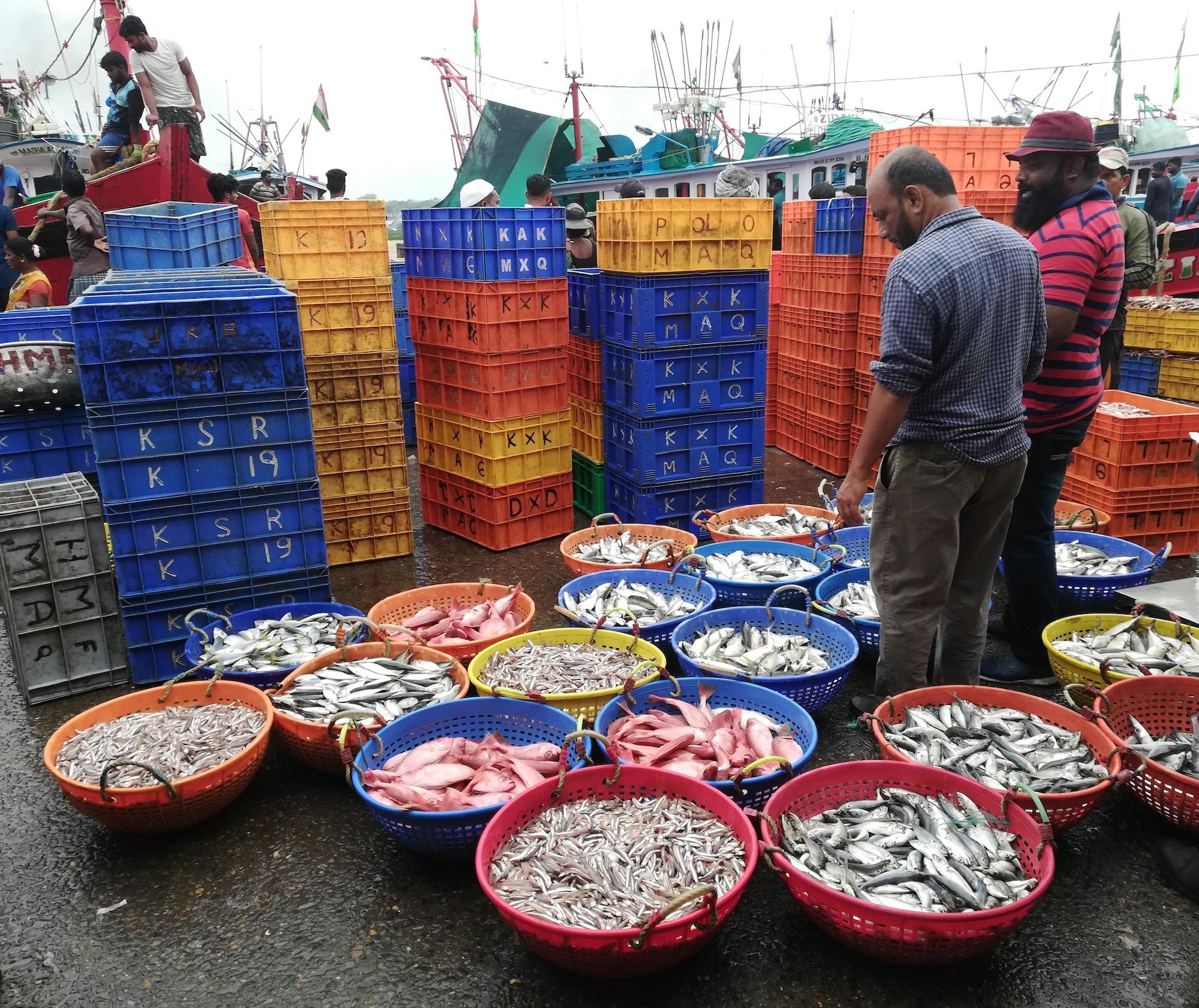In Thota Bengre, Culture Is a Powerful Determinant of Cuisine

Haripriya Eswaran researches aquatic food systems in connection with culture and community well-being, and finds that culture is a powerful influence over the diet of fisherfolk of Thote Bengre.
"Not every fish landed here is eaten in Thota Bengre," a trawl-boat owner tells me, during one of our visits to Mangalore's bunder (port), a ferry ride away from the village. Intrigued, Meghana, my fellow researcher, urges him on, hoping he would elaborate. As he went on, it became clear that the patterns of fish consumption in this village are indeed a confluence of fish landing trends, religion, and traditional beliefs.
“Almost everything we eat, and when, and where, is culturally determined. So taste is taught,” writes Linda Civitello in her book Cuisine & Culture: A History of Food and People. Food, at the molecular level, is made up of carbohydrates, proteins, lipids, vitamins, and minerals; so for all practical purposes, food composition data should be sufficient to govern our dietary habits. In reality, however, social conditioning plays a crucial role in influencing our consumption.
Mangalore port
Catch from the port’s fish auction
Food Norms & Taboos
To cite the most common example, meat consumption is not uniform across the Indian subcontinent. While Islamic law prohibits the consumption of anything haram (or forbidden), including animal blood and pork, Hindus refrain from consuming beef as they believe the cow is sacred.
These norms exist in every society in one form or another across the world. In northern coastal Nigeria, fisherfolk are forbidden from consuming bocho, a species of stonefish species, considered to be a bad omen and believed to bring misfortune upon the eater. In certain other regions of Nigeria, gender-specific taboos are followed; pregnant women are restricted from consuming marine and freshwater snails, alleged to cause over-salivation in infants.
Thota Bengre is a perfect encapsulation of such stories, teeming with culturally-influenced food norms. What began in my research and flowed naturally was a fascinating tale scribbled across the pages of my notebook.
Thota Bengre’s Cultural Guidelines on Consuming Mullet
During my months of research in Mangalore, I learned that in Thota Bengre, mullet fish, locally known as paaremeen, is studiously avoided across the village. The residents, predominantly Hindus, see a strong resemblance between the snout of the mullet fish and that of a snake. Here, snakes, including cobra, are worshipped as synonymous with Lord Shiva, one of the principal deities in Hinduism.
This belief is held so closely that a fisherman recounted the story of his father, who despite multiple warnings, consumed half a kilo of paaremeen. Since this apparent misdeed, his father claims to have frequently encountered snakes, and has not had a good night’s sleep since.
Such beliefs also extend to other parts of the villagers' lives; parallel reservations are associated with eating moray eels too, especially those in shades of black and brown, given their undisputable resemblance to snakes. The fishing community also deeply revers whale sharks and will not hunt them while fishing. (These sharks are also a protected species in our country, and the repercussions of beliefs like these are boosted conservation measures). One fisherman spoke of greeting whale sharks (Rhincodon typus) in the sea with a namaste that is usually reserved for greeting humans. The village’s outlook on whale sharks could possibly stem from the size of these sharks because other species of shark do not enjoy similar admiration.
In fact, other species are eaten, relished as a dry prasad prepared from shark meat, seasoned with spices and condiments, especially in the Ullal region, after consecrating to their local deity, Guliga Daiva (the demigod that has gained recent fame through Rishab Shetty’s action-thriller, 'Kantara).
Thota Bengre Ferry point
Over time, the variety of fish on the plates of fisherfolk have significantly diversified in Thota Bengre. Even two decades ago, people in the village were unlikely to consume species like cuttlefish (kappe bondas), ribbonfish (pambole), japanese threadfin bream (madmal), and moontail bullseye (discomeen), despite their abundance. The most common reason was that their ancestors did not eat them. However, given the increase in demand for these varieties in the larger market, the fisherfolk have become experimental, incorporating these species into their diet.
Historically, there can be several reasons behind certain foods not being assimilated into a specific culture: health concerns, spiritual bias, or even the judicious use of resources. A study on the origin of food taboos describes them as aiding in cohesion of a group, giving the community a sense of identity and belonging.
In India, several studies have shown the impact of food prohibitions on marginalised sections of the community to be significant. Research from Amravati, Maharashtra, showed the implications of dietary restrictions on the health of pregnant women – aggravating iron deficiencies and the development of anaemia. Another study from Srikakulam and Vishakhapatnam in Andhra Pradesh detailed the food restrictions on pregnant women – they were made to abstain from Malabar spinach, gourds and jackfruit. Fruits like pineapple and papaya are believed to cause miscarriages, but are encouraged post-pregnancy for improved lactation.
These stories from Thota Bengre only underline the necessity for the concrete and robust documentation of stories across the country – taboos, prohibitions and associated beliefs. These stories are often passed down orally, if at all, within the community, which means they are at real risk of loss. In a contemporary setting, the thorough knowledge of one’s culture is an advantage in developing effective food interventions. It is also worth mentioning that not all forbidden foods cause nutritional deficiencies, because many foods may have affordable substitutes readily available. But without adequate research and documentation, mapping the influence of these prohibitions on the nutritional status of a community remains close to impossible.
Haripriya Eswaran is a full-time researcher at Dakshin Foundation and is keen on exploring aquatic food systems in relation to culture and community well-being. You can follow her on Instagram, and Twitter.
ALSO ON THE GOYA JOURNAL










